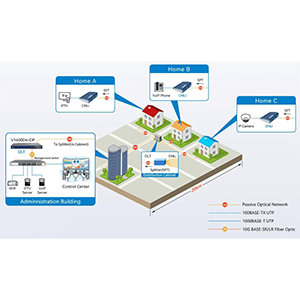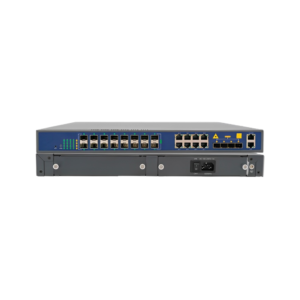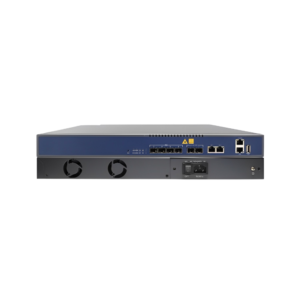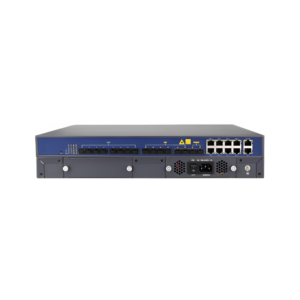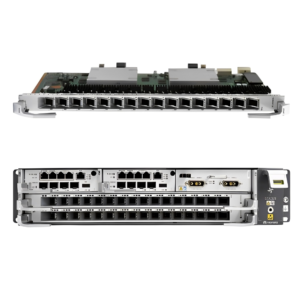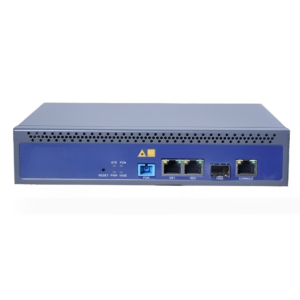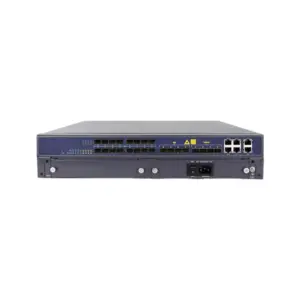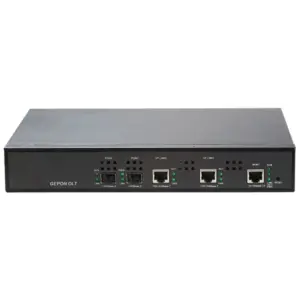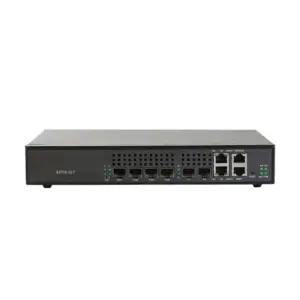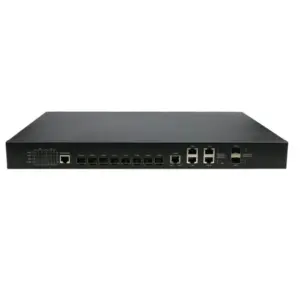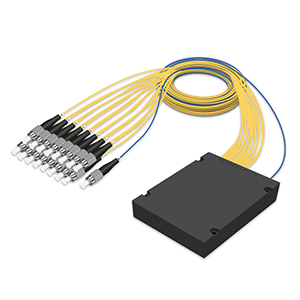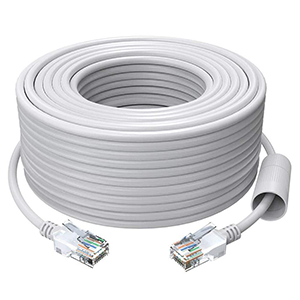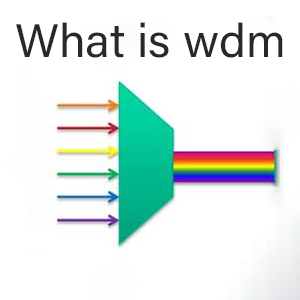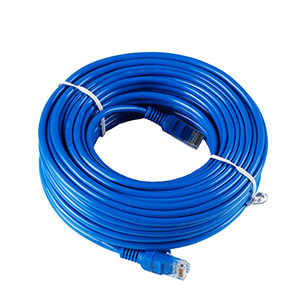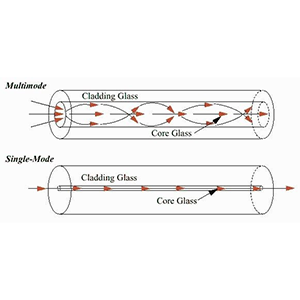Hello everyone! FTTH network is the leading technology in the current optical access field, in which OLT and ONT, as two core devices, play an indispensable role in ensuring high-speed and reliable optical access services. Today I am very happy to provide you with a comprehensive comparative analysis of the different responsibilities and technical characteristics of OLT and ONT in the FTTH network, to help you gain a deeper understanding of the importance of the two working together. By comparing the differences between OLT and ONT in terms of hardware structure and service carrying, I believe you will be able to better plan and build your own FTTH network and provide users with an excellent optical access experience.
What is OLT
Let me introduce you to OLT (Optical Line Terminal). I will give you a brief overview from the following three aspects. If you want to learn more about OLT, please refer to the article What is olt: The Definitive Guide to the Best of 2024
Basic functions and locations of OLT:
- OLT is the core equipment in the FTTH (Fiber To The Home) optical fiber access network.
- The main functions include: optical signal transceiver, business processing, user management, etc.
- Located at the central node of the optical fiber network, connecting the upper layer transmission network and the lower layer access network.
The core position of OLT in the FTTH network architecture:
- As the control center of the FTTH network, the OLT is responsible for unified management of the entire access network.
- Centralized scheduling and control of user services can be achieved through OLT.
- The performance and functions of OLT directly affect the overall carrying capacity of the FTTH network.
The development history and key features of OLT technology:
- OLT was originally developed by telecom operators and used in FTTH network construction.
- With the evolution of PON (Passive Optical Network) technical standards, OLT is also constantly upgraded.
- Main technical features include: high-density ports, high bandwidth capacity, low power consumption, etc.
- Supports mainstream PON technology standards such as GPON, XG-PON, and XGS-PON.
It is not difficult to see from the above that OLT is the core component of the FTTH access network. It shoulders the important task of providing users with high-speed and reliable optical access services. With the continuous development of PON standards, OLT equipment is also continuously optimized and upgraded to meet the needs of higher speed and large-capacity optical fiber networks in the future. The status and role of OLT in the FTTH network are indispensable.
What is ONT
Let me introduce ONT (Optical Network Terminal) to you. I will give you a brief overview from the following three aspects. If you want to know more about ONT, See the article What is ont: The Definitive Guide to the Best of 2024
Basic functions and features of ONT:
- ONT is the user-side terminal equipment in the FTTH (Fiber To The Home) optical fiber access network.
- The main functions include: converting optical signals into electrical signals and providing access to voice, video, data and other services.
- Typical features include: integration of multiple business interfaces, high reliability, easy deployment, etc.
- It is a key device that connects users and the network.
ONT’s user-side terminal status in FTTH network:
- ONT is located on the user side of the FTTH network and is responsible for providing optical access services to users.
- Through ONT, users can access high-speed, high-bandwidth optical fiber networks and enjoy a rich business experience.
- As an important part of the FTTH network, ONT plays a key role in the entire network architecture.
The development history and application status of ONT technology:
- ONT technology has gradually matured with the rise of FTTH networks, and has experienced development from single to multi-functional.
- Initially, it mainly provided basic voice and data services, and later gradually integrated IPTV, VOIP and other services.
- Currently, ONT technology has been widely used in FTTH deployments around the world and is an important component of optical fiber access networks.
- With the continuous evolution of PON (Passive Optical Network) standards, ONT equipment is also constantly upgraded.
From the above, it is easy to see that ONT, as the user terminal equipment in the FTTH network, bears the key task of providing users with high-speed optical access services. With the popularization of FTTH networks, ONT equipment is constantly enriching its functions to meet the diverse business needs of users. ONT’s position in FTTH applications is increasingly prominent.
Comparison of differences between OLT and ONT
Let me compare the differences between OLT (Optical Line Terminal) and ONT (Optical Network Terminal) from multiple aspects:
Hardware structure and interface type:
- OLT usually adopts high-density, modular design and supports multiple PON interfaces.
- ONT is relatively compact and integrates multiple user-side interfaces such as Ethernet, POTS, and CATV.
Bearer service and performance indicators:
- OLT is responsible for centralized processing and management of the entire access network business.
- ONT focuses on providing service access for end users, and its performance is highly targeted.
- OLT usually has higher bandwidth capacity, port density and other indicators.
Network location and functional positioning:
- OLT is located at the central node of the FTTH network, connecting upstream and downstream networks.
- ONT is located on the user side and directly provides users with optical fiber access services.
- OLT is responsible for network management and control, while ONT performs user-side access.
Their collaborative working mechanism:
- OLT and ONT interact through PON standards (such as GPON, XGS-PON, etc.).
- OLT manages ONT registration and authentication, business configuration delivery, etc.
- ONT provides uplink and downlink data transmission and service access according to the instructions of OLT.
In general, OLT and ONT each assume different roles and functional positioning in the FTTH network. OLT serves as the control center of the access network, while ONT is the terminal equipment that directly provides users with service access. The two work closely together through standardized protocols to jointly realize the efficient operation of the FTTH network.
The role of OLT and ONT in FTTH network
Let me further discuss the important role of OLT and ONT in FTTH (Fiber To The Home) fiber access network:
The core position of OLT in providing optical fiber access services:
- As the central node of the FTTH network, OLT is responsible for the unified management and control of the entire access network.
- Through OLT, centralized scheduling of user services can be realized and high-speed and reliable optical access services can be provided.
- OLT performance indicators, such as port density, bandwidth capacity, etc., directly affect the network’s carrying capacity.
- OLT’s central position in the FTTH network is indispensable.
The key role of ONT in realizing fiber-to-the-home terminals:
- ONT is located on the user side of the FTTH network and is responsible for providing service access to end users.
- ONT converts optical signals into electrical signals available to users, supporting multiple services such as voice, video, and data.
- The functional integration, reliability, ease of deployment, etc. of ONT equipment are directly related to user experience.
- ONT is the key terminal equipment for carrying the final service of FTTH network.
The importance of OLT and ONT working together to realize FTTH network:
- OLT and ONT interact through standardized protocols to build an end-to-end management system for the FTTH network.
- The collaborative work of the two ensures the efficient and stable operation of the entire optical access network.
- Provides users with high-speed and rich optical fiber broadband services, greatly improving user experience.
- Promoted the widespread deployment of FTTH networks and accelerated the process of fiber-to-the-home.
Therefore, OLT and ONT perform their respective duties in the FTTH network, and jointly build a high-performance, highly reliable optical fiber access system. The collaborative cooperation between the two is the fundamental guarantee for the realization and sustainable development of FTTH network. For an in-depth understanding of OLT and ONT, please see the article OLT and ONT: The best comprehensive guide for beginners
Summary
OLT and ONT are the two core devices in the FTTH network. Although there are certain differences in hardware structure, interface type, etc., they play an indispensable and closely related role in collaborative work. OLT provides high-performance optical fiber access services on the network side, while ONT realizes fiber-to-the-home terminal connections at the user end. The two work together to build a solid foundation for the FTTH network.
We provide professional OLT and ONT products and FTTH network planning services, and have an experienced technical team to provide you with considerate guidance at any time. If you have any needs during the construction and maintenance of FTTH network, please feel free to contact us for communication.
OLT vs ONT FAQ
The OLT is the central device in the network responsible for managing the entire PON, while the ONT is the customer-premises equipment that converts the optical signals to electrical signals for end-user devices.
OLTs typically have security features like authentication and encryption to secure the network traffic, while ONTs often include firewalls and antivirus protection to safeguard the user-side devices.
They need to adhere to common PON standards, such as GPON or XGS-PON, to ensure compatibility and proper communication between the devices.
Modern OLTs and ONTs often integrate Ethernet, voice, video, and other interfaces to simultaneously provide various value-added services to users.
The selection depends on factors like network scale, user count, and service requirements to choose the right port density, interface types, and performance parameters.
Service providers typically use dedicated management platforms or protocols like SNMP to centrally manage and monitor the OLTs and ONT.
OLT hardware and software can be upgraded based on network needs, while ONT can be remotely upgraded or replaced onsite for maintenance.
Power efficiency and thermal design are crucial factors that impact the energy consumption and reliability of OLT and ONT during deployment.
Measures like backup OLT, power supply redundancy, and alternative link paths can improve the reliability of OLT and ONT.
Centralized management systems and automated configuration tools can simplify the deployment and maintenance of OLT and ONT.

